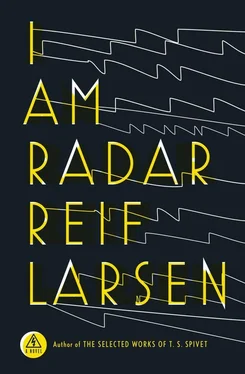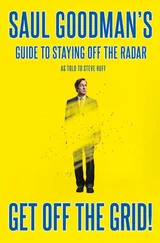Perhaps all of the fuss was due to the alchemy of that particular time and place: eight years removed from the ’67 Newark riots, urban white flight was now in full swing. The manufacturing industry was steadily collapsing, leaving New Jersey in the throes of a severe recession. People — both white and black alike — were struggling to come to terms with the great expectations laid forth by the civil rights movement of the previous decade. How would such lofty ideals play out in the banal commerce of the everyday? Had everything changed? Or, as many were slowly realizing, had nothing really changed at all?
No doubt the story also gained traction because the simplest and most obvious explanation for Radar’s appearance, the explanation that spawned a thousand breakfast table jokes — a.k.a. “the milkman theory”—ultimately proved inadequate, given the child’s coloring. If the people could only have gotten a good look at the baby, they would have understood, once and for all, that mere infidelity could not possibly have triggered such a dramatic swing in color from the whitest of whites to “the blackest of blacks.” And yet the people could not get a good look at Radar Radmanovic, because there were no photos of him save a (supposed) shot of his incubator, taken from some distance. With such scant evidence, the public was left to wonder on their own about the nature of inheritance, about what was passed down to a child and what was not, about the chances of such a highly unusual genetic occurrence — if it was indeed a genetic occurrence — ever happening to one of their own children. In the midst of all this, the family remained secretive, declining all interviews, shunning photographers, despite rumors of several five-figure offers for an exclusive photo shoot and rights to their story.
On one of the morning talk radio shows, a then relatively unknown Reverend Jesse Louis Jackson, who was about to embark on the famous ten-day tour of apartheid South Africa that would subsequently springboard him into the international spotlight, weighed in on the case, admonishing the media for implicitly accusing “the black male scapegoat of raping another one of its white women.”
“This,” he said emphatically, “is an act of God, not of one man. This child is blessed . I hope the family realizes just how lucky they are.”1
Radar’s story lingered in the Jersey tabloids for only a week or so. Various medical professionals and semi-professionals were called in to offer half-baked theories for what might have happened to the baby — theories that ranged from a rare double-recessive melanism gene expression (“A distant black ancestor come to life!”) to toxic waste exposure from one of New Jersey’s many Meadowlands industrial sewage dumps (“The child was a mutant!”). After this initial flurry of coverage, however, the story, like all stories, shriveled up and eventually disappeared, and Radar and his condition would not be heard of again until nearly four years later, when Dr. Thomas K. Fitzgerald would deliver his much-anticipated diagnosis, “On an Isolated Incidence of Non-Addison’s Hypoadrenal Uniform Hyperpigmentation in a Caucasian Male,” in the Journal of Investigative Dermatology.
Charlene Radmanovic, for her part, emerged from the afterglow of the birth with a strange olfactory condition, in which everything around her smelled exactly the same, and of such an intensity as to be almost paralyzing. At first the hospital and all of its contents smelled of something approximate to burnt Cocoa Krispies. The night nurse, the squishy spinach greens in her muted meals, the urine-resistant plastic pillows, the television remote buttons — everything was morning cereal, permanently singed and distinctly nauseating. Most distressing of all was that her own son, whom she was eventually allowed to hold, smelled so strongly that she could not be near him for long without becoming overwhelmed by his smoldering stench. It was the worst kind of torture — to be repulsed by the very thing one should love above all else. Breast-feeding felt like the most unnatural act in the world. He would not latch, and she quickly grew too dizzy to persist for long. Her complaints were answered with more painkillers, and when these did not work, a half-blind British otolaryngologist was summoned to her bedside. He prodded her sensory orifices and declared the condition temporary.
“A childbirth is an explosion,” he said by way of explanation. “Some shrapnel is inevitable, isn’t it?”
A week of intensive tests confirmed that everything else with Radar, save his unlikely hue, was more or less normal. A couple of the results were slightly worrisome: the iron content in his blood was elevated, as were his cortisol levels, though neither of these was unusual for newborns recovering from the hormonal starburst of birthing and the violent adjustment to a new world of oxygen and sunlight. Baby Radar also exhibited slightly higher-than-normal blood pressure and suffered from moderately dry skin that required treatment with a prescription lotion. But nothing so out of the ordinary as to point to a cause for his unusual appearance. His hair, present from birth, was soft and black and straight, just like his father’s. Indeed, if you could look past his darkness, Radar perfectly resembled a little Kermin: there was the same dimpled chin, the same funicular jawline, the same protrusive brow. If not for their diametric coloring, there would be no question of their relation.
Luckily, the public debate around Charlene’s possible infidelity, a debate that had ignited all sorts of heated exchanges about race and sexuality in the local media, had not quite managed to pierce the cocoon of their hospital room. Dr. Sherman had done well to keep the cameras at bay. He was distinctly aware of the care one must take when wading into such a sensitive subject. At the time, comprehensive DNA testing was not readily available, and questions of legitimate parentage could often linger indefinitely. Still, Dr. Sherman thought it his duty to inform them of their options, should they want to pursue certain answers, and so, the day they were scheduled to take Radar home, he called them into his office for a final meeting.
“Here we are!” he said. “Hard to believe it’s only been a week.”
Charlene looked exhausted.
“What,” she asked, bringing a hand to her nose, “do we do now?”
“Well. .” He thumbed at his pen. “That all depends. I’m not sure if you want to do a test.”
“A test?” she said. “For what?”
He paused. “For paternity. There’s a new procedure available that uses HLA from both father and baby, but it’s expensive, and the lab needs a significant amount of blood to test, so we would need to wait until the baby is at least six or eight months—”
“What’re you saying?” she said.
“What am I saying?”
A silence.
Dr. Sherman held up his hands. “Look, I didn’t mean to suggest anything one way or another. I was merely pointing out that there are tests out there, should you choose to want to know these things.”
Kermin was staring at his wife. She was looking back at him, steadily. After a moment, her eyes filled with tears.
“Kermin,” she said, reaching out for his hand. “Kermin. Kermin.”
Dr. Sherman decided it was time to start speaking again. “It’s all your choice, of course. Regardless, you’ll no doubt want to see a specialist about your son.”
He handed her a list of referrals, which Charlene accepted, only briefly shifting her gaze away from her husband’s face. His eyes had stayed hot, but there was now something dull and sooty around their edges, something she had not seen before, like glowing embers suddenly shushed by a bucket of water.
Читать дальше












